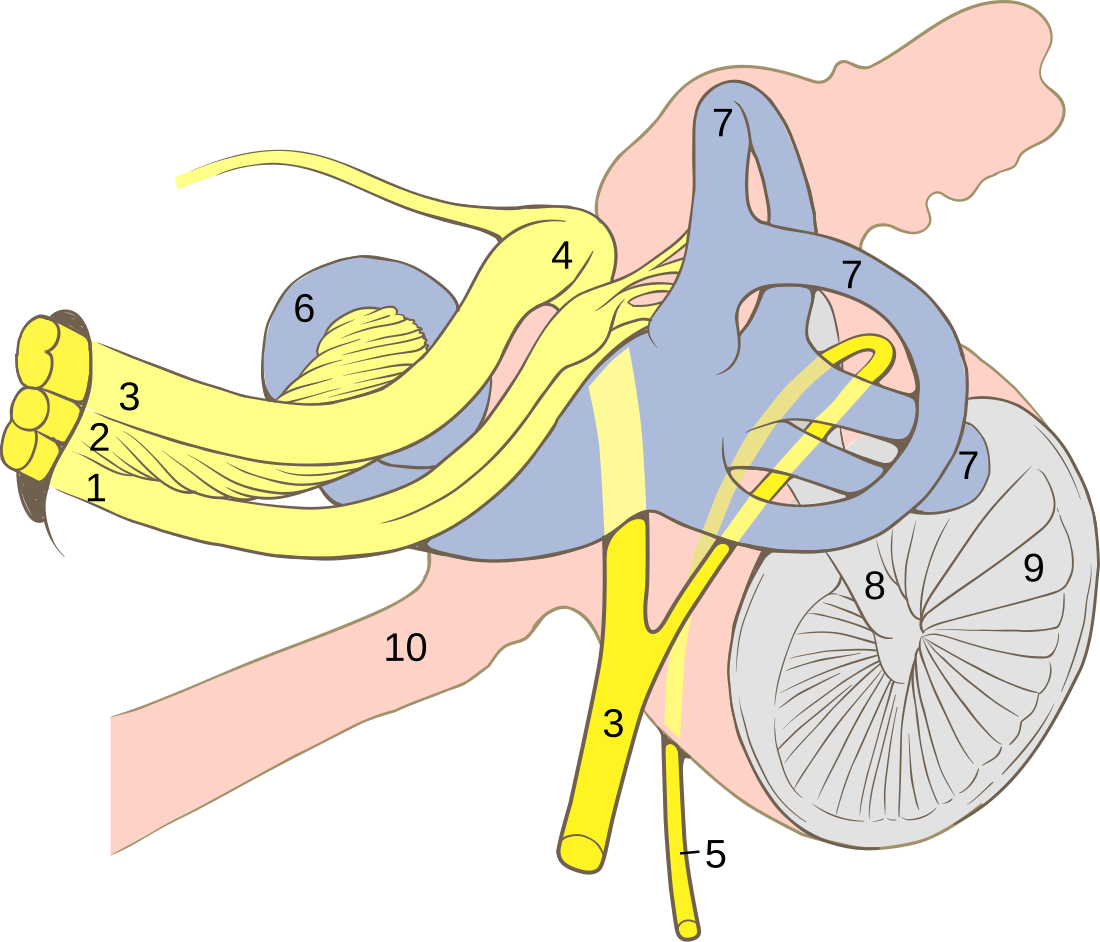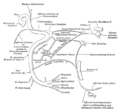Top Qs
Timeline
Chat
Perspective
Geniculate ganglion
Collection of facial nerve neurons From Wikipedia, the free encyclopedia
Remove ads
The geniculate ganglion (from Latin genu, for "knee"[1]) is a bilaterally paired special sense ganglion[2] of the intermediate nerve component of the facial nerve (CN VII).[3] It is situated within facial canal of the head.[citation needed]
It contains cell bodies of first-order unipolar sensory neurons which convey gustatory (taste) afferents from taste receptors of the anterior two-thirds of the tongue by way of the chorda tympani, and of the palate by way of the greater petrosal nerve, From the ganglion, the proximal fibres proceed to the gustatory (i.e. superior/rostral[3]) part of the solitary nucleus where they synapse with second-order neurons.[2]
Remove ads
Anatomy
Structure
The geniculate ganglion is conical in shape. The greater petrosal nerve diverges from CNVII and the lesser petrosal nerve diverges from CN IX at the geniculate ganglion.[3]
Relations
It is located close to the internal auditory meatus.[4] It is covered superiorly by the petrous part of the temporal bone (which is sometimes absent over the ganglion).[5]
Clinical significance
The geniculate ganglion is an important surgical landmark near the internal auditory meatus.[4]
Herpes zoster oticus
The geniculate ganglion may become inflamed due herpes zoster virus virus infection. Swelling of the ganglion may result in facial palsy (Ramsay Hunt syndrome). The syndrome presents with intense pain in one ear that is followed by a vesicular rash around the ear canal.[2]
Additional images
- Plan of the facial and intermediate nerves and their communication with other nerves.
See also
References
External links
Wikiwand - on
Seamless Wikipedia browsing. On steroids.
Remove ads



